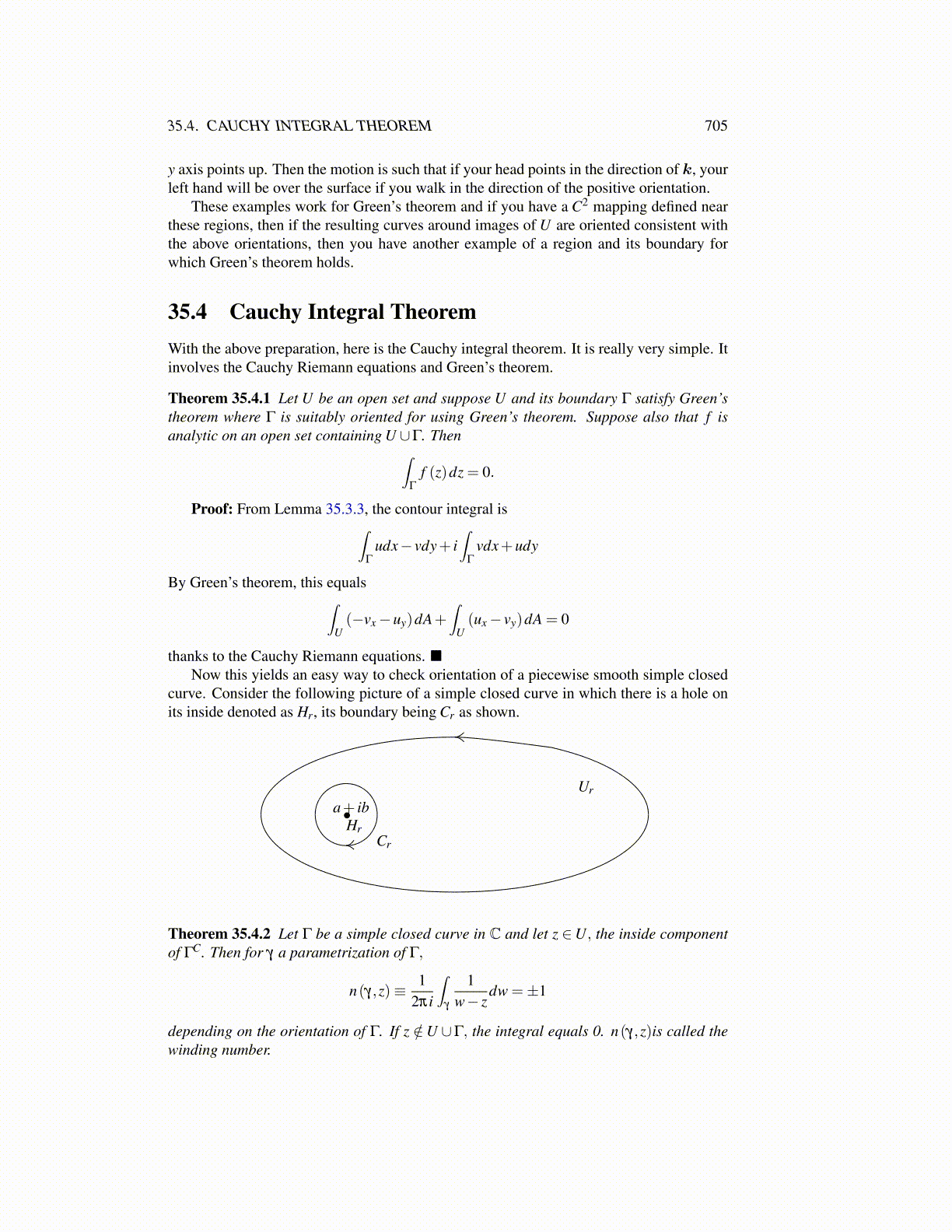
35.4. CAUCHY INTEGRAL THEOREM 705
y axis points up. Then the motion is such that if your head points in the direction of k, yourleft hand will be over the surface if you walk in the direction of the positive orientation.
These examples work for Green’s theorem and if you have a C2 mapping defined nearthese regions, then if the resulting curves around images of U are oriented consistent withthe above orientations, then you have another example of a region and its boundary forwhich Green’s theorem holds.
35.4 Cauchy Integral TheoremWith the above preparation, here is the Cauchy integral theorem. It is really very simple. Itinvolves the Cauchy Riemann equations and Green’s theorem.
Theorem 35.4.1 Let U be an open set and suppose U and its boundary Γ satisfy Green’stheorem where Γ is suitably oriented for using Green’s theorem. Suppose also that f isanalytic on an open set containing U ∪Γ. Then∫
Γ
f (z)dz = 0.
Proof: From Lemma 35.3.3, the contour integral is∫Γ
udx− vdy+ i∫
Γ
vdx+udy
By Green’s theorem, this equals∫U(−vx−uy)dA+
∫U(ux− vy)dA = 0
thanks to the Cauchy Riemann equations. ■Now this yields an easy way to check orientation of a piecewise smooth simple closed
curve. Consider the following picture of a simple closed curve in which there is a hole onits inside denoted as Hr, its boundary being Cr as shown.
•a+ ibUr
HrCr
Theorem 35.4.2 Let Γ be a simple closed curve in C and let z ∈U, the inside componentof ΓC. Then for γ a parametrization of Γ,
n(γ,z)≡ 12πi
∫γ
1w− z
dw =±1
depending on the orientation of Γ. If z /∈U ∪Γ, the integral equals 0. n(γ,z)is called thewinding number.